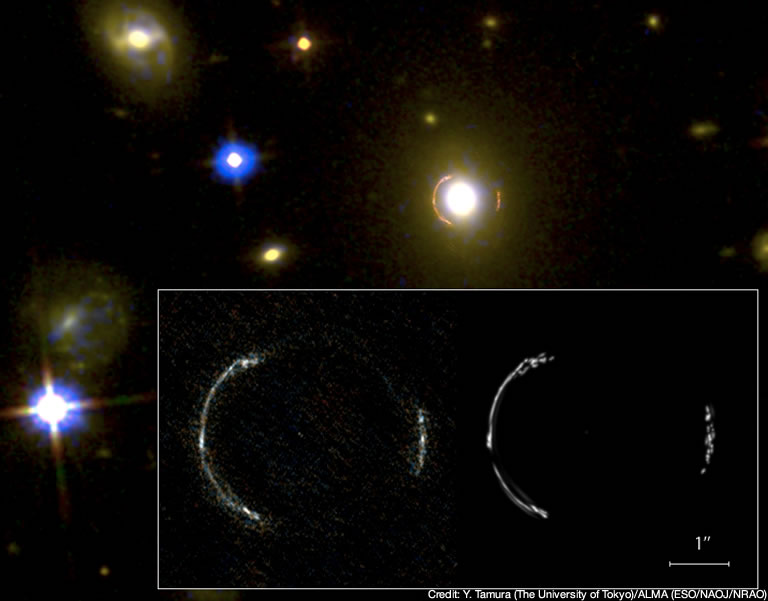ALMA uses ‘Natural Telescope’ to Image Monstrous Galaxy near the Edge of the Universe
| Science
This press release was issued by The University of Tokyo on June 9th, 2015 in Japanese. English version is translated by the National Astronomical Observatory of Japan.
For centuries cartographers were fond of depicting monsters along the edges of their maps. Now, researchers have depicted a monstrous galaxy near the edge of the charted Universe with unprecedented detail using the Atacama Large Millimeter/submillimeter Array (ALMA) with the assistance of a ‘natural telescope’ known as a gravitational lens. The team modeled the lensing effects and corrected for them to reveal the distribution of huge stellar cradles in the monstrous galaxy. As a bonus, the same model indicates, for the first time, the existence of a supermassive black hole at the center of the foreground galaxy.
These research results appear in “High-resolution ALMA observations of SDP.81. I. The innermost mass profile of the lensing elliptical galaxy probed by 30 milli-arcsecond images” by Tamura et al., in the Publications of the Astronomical Society of Japan (PASJ) issued on June 9, 2015. The paper is also available through arXiv: http://arxiv.org/abs/1503.07605
